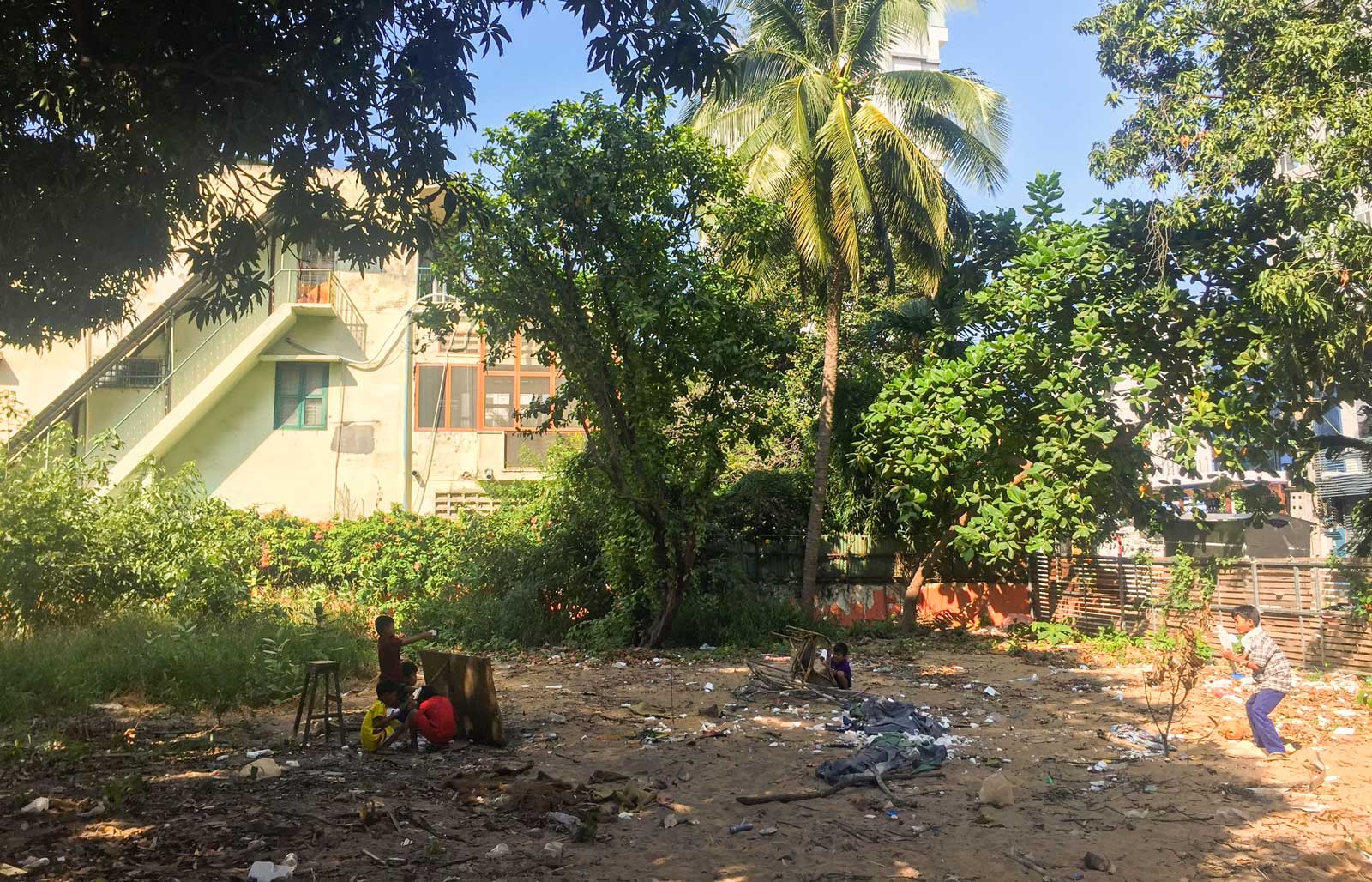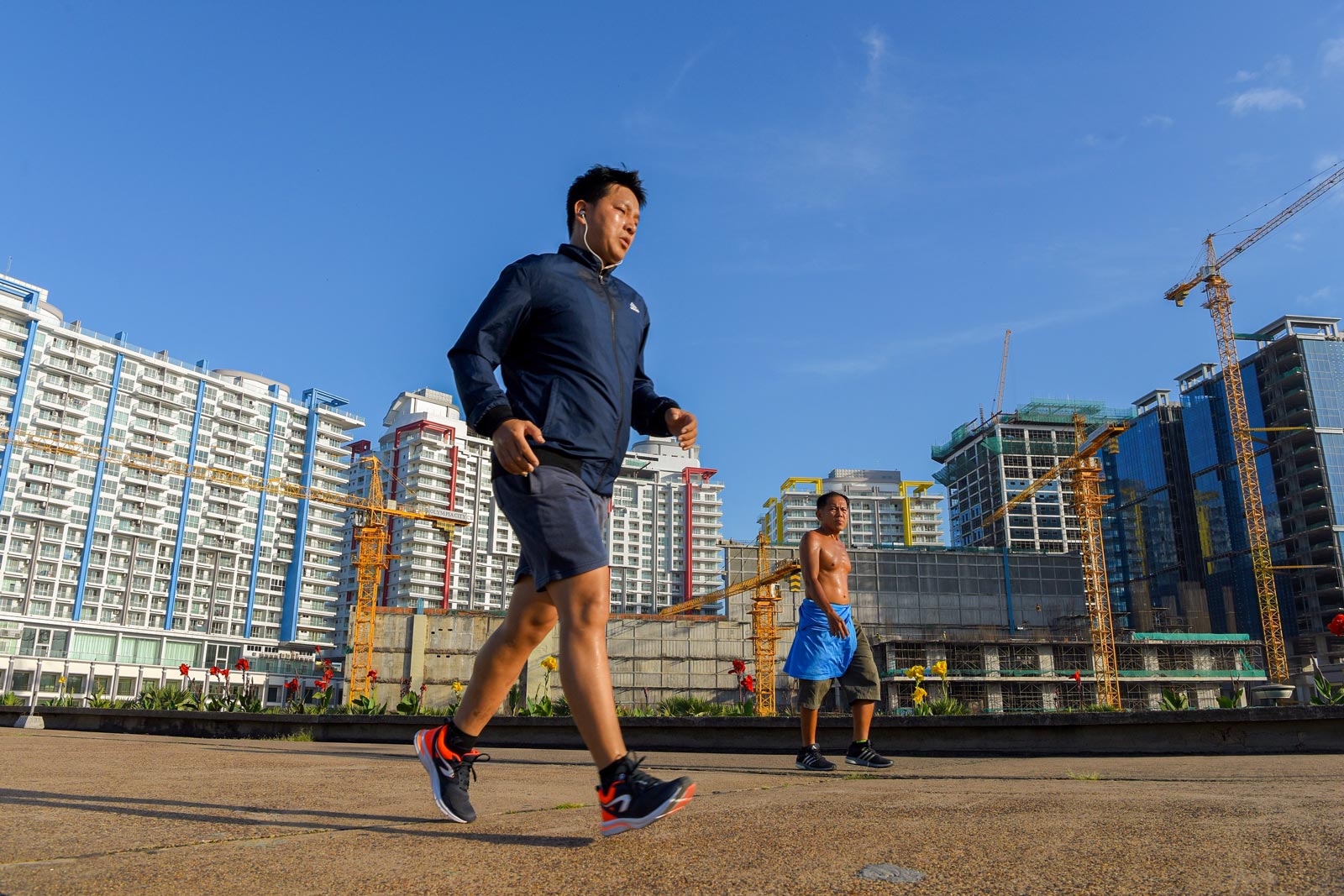If you study a satellite image of Phnom Penh closely, you will see a dizzying swirl of grey and brown blocks – a sign of the capital’s sprawling multi-billion dollar development boom industry. If you squint, you may also find a few scattered blocks of green, highlighting a critical gap in urban planning: Phnom Penh’s shrinking urban green spaces (UGS).
According to the World Health Organisation, every city should provide its citizens with at least 9 square metres of UGS per capita to contribute to the health, happiness and wellbeing of communities. In stark contrast, the Global Green Growth Institute estimates that Phnom Penh currently offers 1.1 square metres per capita.
When asked about Phnom Penh’s lack of green spaces, Phnom Penh-based, UK landscape designer Simon Johnson attributed this to Cambodia’s unprecedented development rate. “As one of the fastest growing countries in the world, Cambodia has seen a lot of urban development – but it’s very divided development. One of the things that’s been sacrificed for this speed of growth is urban green space, and the importance this has for the population.”
It’s not just about Phnom Penh growing rapidly – the city’s urbanisation is also largely unplanned and unregulated, resulting in dwindling green spaces, urban flooding, informal settlements, and neglect of the urban poor.

Last month, Southeast Asia Globe attended a workshop on urban green spaces in Phnom Penh held by Build4People, a German government-funded project researching and promoting sustainable urban development in Cambodia. Participants representing different private and public institutions shared similar frustrations on the government’s lack of regulation in urban planning.
One participant, who requested anonymity, said that “instead of keeping land as public property and investing it into green space, this land is currently being sold to the highest private bidders. The pressure from developers is high.”
While few would advocate denying affordable housing to a growing urban population – particularly in light of Cambodia’s recent progression to lower-middle income country status – the city’s current trajectory, a concrete jungle devoid of green spaces, is no more desirable.
A tonic for urban blues
For Phnom Penh’s residents, the city’s shortage of green spaces is sorely felt. At dawn and dusk, people gather along the riverside, a narrow strip of concrete and lawn that remains one of the few spaces reserved exclusively for the public to participate in sports and recreational activities.
Amidst the clogged traffic and air pollution, aerobics class member, Chav Sokhom, voices her concerns.
“We don’t have enough parks, and the ones we do have smell bad. Urban development needs to take this into account. I don’t want to see our city stay the same, I want it looking as beautiful as other countries.”
Public green spaces connect people from different backgrounds together. Without these spaces, society is developed with a sense of otherness and distrust
Corbett Hix, director of creative-hub Factory Phnom Penh
For doting grandfather Bun Sou, the riverside, despite its shortcomings, remains a safe space for his grandchildren to run around freely, away from the chaotic traffic. When asked about what can be done to remedy the lack of parks in the city, he said that “even if the government wants to build more parks, there isn’t enough space for them. We the people don’t have a right or say in the matter.”
A 2016 study by digital journal publication MDPI on Cambodian youth perceptions of urban green spaces in Phnom Penh suggests widespread desire for more public green spaces. While 67.3% of respondents viewed UGS as a necessity, with 94.43% demanding more green spaces in the city.
Green spaces also provide a fresh set of lungs for urban dwellers, acting as sponges of carbon dioxide and sources of breathable air. Countless scientific studies conducted in recent years confirm that easily accessible pockets of nature in urban spaces – including parks, gardens, and green spaces – boost people’s health and wellbeing.
In a 2017 study, researchers from Denmark’s University of Aarhus found that children with access to green space had a reduced risk of developing psychiatric disorders later in life. A research paper published the same year by journal publishers BMJ Open found similar findings on the benefits of green space for the elderly. Examining a pool of Chinese pensioners living in Hong Kong, the study showed that a 10% increase in exposure of green space was “significantly associated with a reduction in all-cause mortality”.
Similarly, in a 2017 study, researchers in the Netherlands found that people who thought of their local green spaces as accessible and useable felt happier with their neighbourhood, irrespective of the amount of UGS available to them.
The benefits of UGS extend to a city’s functioning too. UK-based organisation Forest Research cite an exhaustive list of environmental and economic benefits of UGS, including, but not limited to, flood-risk alleviation, sustainable urban drainage systems and slope stabilisation.

According to Corbett Hix – a long-time advocate for community public spaces in the capital, and director of creative-hub Factory Phnom Penh – the positive influence of green spaces extends beyond just health and economic benefits.
“Public green spaces connect people from different backgrounds together. Without these spaces, society is developed with a sense of otherness and distrust,” he said.
But with Phnom Penh a city already densely populated and blighted by unregulated development, the question remains – what can be done and where does ultimate responsibility lie for adding more green spaces in the capital?
Big problems, innovative solutions
According to Hix, it’s the government’s responsibility to step up to the task of building more green spaces in the capital.
“It needs to be the government, particularly at the local level, and it needs to be done by the equivalent of a city council, or at the Sangkat level, with community-led initiatives. [However], it does seem that there is a lack of mechanisms currently for the community to interact with their local government.”
In an attempt to keep the city’s fast-growing development projects in check, as well as increase urban green spaces to up to 20 square metres per person by 2030, in 2015 the Cambodian government published the Land Use Master Plan of Phnom Penh City 2035.
However, this flawed strategic document lacks detailed land-use strategies or specific plans for implementation. In particular, critics note how a lack of clarity around financing and responsibilities, compounded by lax regulations on obtaining building permits, has made enforcement of the plan nearly impossible.
When assessing the effectiveness of the Master Plan, the World Bank has also highlighted glaring holes in its implimentation. In its 2017 report on urban development in Phnom Penh, it reveals how developments of less than 3,000 square metres need approval from the Phnom Penh Municipality, while larger developments are approved by the Ministry of Land Management, Urban Planning and Construction.
Consequently, development can be approved at the ministry-level without consulting or looping in city-level authorities, meaning decisions on matters to do with land allocation – and ultimately green space allocation – are made without the involvement of local institutions. In practice, this means the average Cambodian has few avenues through which to influence change.
The Boeung Kak Lake case remains the most prominent example of this. The case shows what happens when there is no allocated investment in public green spaces, also illustrating the lack of transparency and scant regard for community participation in Cambodia’s construction sector.

In 2010, Phnom Penh City Hall and the development firm Shukaku Inc announced a joint operation to transform the Boeung Kak Lake area into a mixed-use development. The lake was filled with sand, meaning homes around the lake flooded, businesses shut down and communities living in the area were forced to vacate. This triggered an onslaught of community protests the government struggled to quell at their peak. Today, the displaced residents of the former lake still seek justice.
Mach Tola, an architect at Phnom Penh-based architectural firm De.IDEA and a research volunteer at the Cambodia Institute of Urban Studies, suggests the solution could lay in schools and pagodas opening up their grounds to the public for sports and recreation.
Tola would also like to see the city converting “small pocket-like empty spaces between neighborhood blocks and propose them as contemporary public green spaces like playgrounds”, adding that this would open up spaces to everyone, “not just the minority”.
When Southeast Asia Globe sat down with David Cole from Atelier Cole architect design firm, he also talked of proposed plans to knock down pagoda walls in the city, creating pocket-like shaded areas for public use.
“We wanted to see whether there was an opportunity to remove these walls, celebrate the buildings themselves but also provide more opportunities for the public living around. We presented the idea to the local authority but that’s as far as it got … it was more of a pipe dream kind of idea, a point of view to show how green spaces don’t need to be a detriment to anyone economically.”

However, some believe responsibility for UGS lies with the private sector.
Proposed at the Build4People urban green workshop last month was the notion of introducing fees for private companies that would then be allocated to creating public spaces. This could then be regulated by legislation.
Cole supports the plan: “Developers could just develop 50% of their plot for building, and the other 50% could be given over to infrastructure allocation, like building safer roads and more green space.”
Whether the solution lies with the government, the private sector or schools and pagoda’s opening up their spaces to the public, it’s the residents of Phnom Penh who are currently suffering due to the ongoing disappearance of the city’s green spaces.
“It’s about finding spaces where a sixty-five year old Khmer grandma can take her grandchildren to a safe space,” Hix says. “It’s about giving people who are holed up in their apartments without natural light a chance to step outside, and have that brief connection with nature and people.”


